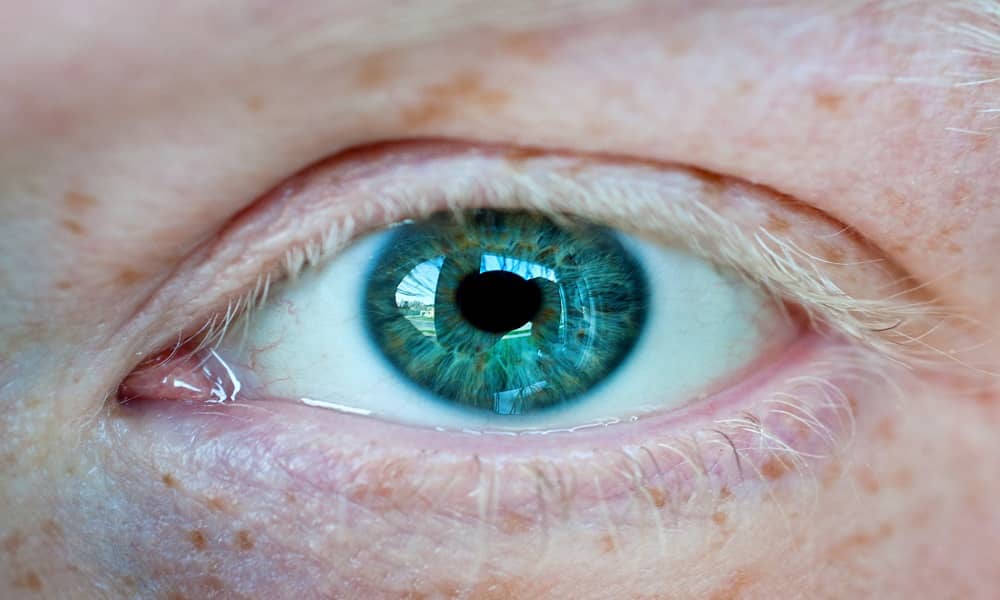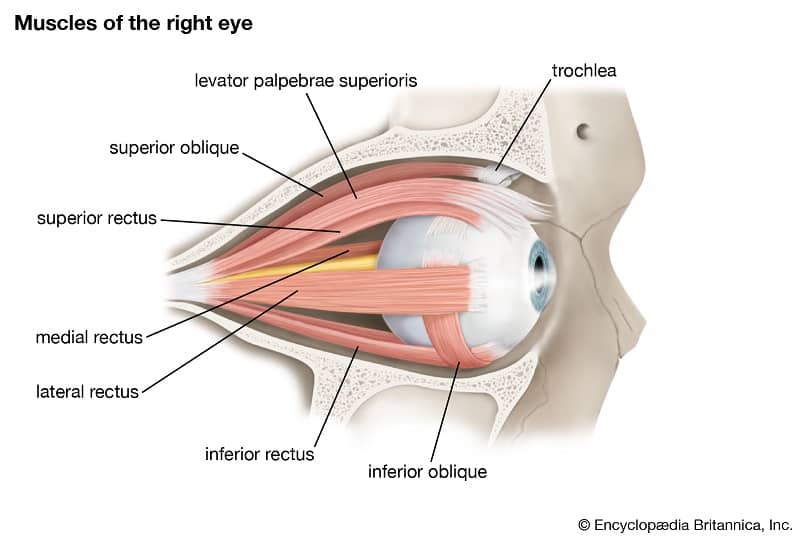


28 Jun Natural Ways to Cure Droopy Eyelid | Exercises and Remedies
Like any other part of the body, eyelids also tend to give away your age.
Now, drooping of eyelids was much less likely to be a cause of concern if it was only about an aged look to your eyes. But, no, ptosis (drooping upper eyelids) is much more than just physical appearance.
And while the most common sign of ptosis is drooping upper eyelids, it’s not uncommon to experience other symptoms along with it. Some of them being eye fatigue, tearing, or even difficulty while blinking.
Thus, it’s crucial you seek treatment and get it fixed.
The theme for today’s blog is just that. What can you do to get rid of ptosis, of course, other than having surgery?
First off are some exercises to tighten and strengthen the eyelid muscles.
These can also help work levator palpebrae superioris muscle, which is responsible to treat the upper eyelid, along with other eyelid muscles.
How to Get Rid of Ptosis [5 Exercises for Droopy Eyelids]


If your eyes seem heavy, droopy, or tired, simple eyelid exercises might help.
The logic here is to use the muscles that have weakened, resulting in strengthening them and creating an appearance of lifted eyelids.
Here are 5 droopy eyelid exercises that can improve ptosis.
#1: Massage
Even without workouts, only cleaning, warming, and mildly massaging your eyelids improves blood circulation and nerve responses.
It also prepares your eyelids for the next workouts by making the muscle in that area softer and flexible.
#2: Trataka Yogic Eye Exercise
How to fix droopy eyelids without surgery?
Well, this eyelid exercise can help while being beneficial for overall eye health and eyesight improvement.
The Trataka yogic eye exercise is known in the yoga and the Ayurveda community. Obviously, eye movement is related to eyelid movement. This is beneficial overall.
Fix your eyes on a specific object and stare at it without removing your gaze elsewhere for as long as possible. This is beneficial for strengthening muscles.
#3: Create Muscle Resistance
Raise eyebrows by putting a finger underneath. Keep them up for a few seconds before closing.
This creates resistance, which is basically similar to weight lifting. Or, you can do quick, forcible blinks, and eye rolls for further eyelid workouts.
#4: Work the Drooping Eyelids
If you’ve one droopy eyelid, you may use the other one for more challenging work.
This means the one with the drooping eyelid doesn’t get to be at work. Hence, not getting enough movement.
So, what you can do is cover your good eye with a patch. Thus, forcing the weaker eyelid to get some natural movements.
#5: Stimulate the Muscles
For this, you can use either movement of the eye or external stimulation through mechanical pressure on the eyelid. Do not exert too much pressure, though.
Light stimulation of the eyelid muscles may help in exercising the small muscle of the eyelids. You may use an electric brush for 1-2 minutes at a time for some stimulation.
These were some of the ptosis workouts you can perform regularly to lessen your condition. Remember to use light pressure and movements that do not overexert the area.
Plus, we do not advise exercising in severe cases of ptosis with blocked vision as this may worsen your symptoms.
But, in all the other cases, perform these exercises properly and lightly each day, and you can see visible improvements with time.
You can also add in these natural remedies for more relief.
How to Get Rid of Ptosis Naturally [7 Home Remedies]
So, how to lift hooded eyelids?
Surgery is not the only answer.
Natural remedies can be an easy fix for all kinds of problems. Even in intense to mild ptosis, there are some natural cures. While there are no scientific studies supporting these, you can give them a try before you go for more intrusive treatments.
Here are a few natural droopy eyelid treatments.
1. Try Eye Compress
The method helps in relieving the pain and discomfort related to ptosis. Just soak chamomile tea bags in hot water and leave them to cool off.
Remove excess tea, lay down, and place them on the affected eyes. Relax. Meanwhile, put a towel below your head because droplets of tea can cause a stain.
A study of Case Western Reserve University shows the benefits of chamomile tea. It reduces inflammation and relieves nerves. Surprisingly, it has specific benefits for fighting eye inflammation because of the various phytochemicals it has.
Regular usage can fight off eye infections and disorders. This involves issues like blocked tear ducts and other conditions of inflammation.
2. Acupuncture
Drooping eyelids can occur due to certain neuromuscular conditions, like stroke or Bell’s palsy. In such a situation, acupuncture is an effective ptosis treatment.
An acupuncturist with experience in neuromuscular conditions can help. They would place needles in specific facial and scalp muscles. Indeed, this aids in re-innervate facial muscles and rousing atrophied muscles.
You may require the treatment twice a week for a few months. Continue the visit to an acupuncturist until your ptosis symptoms decimate.
3. Up the Vitamin B12 Intake
The nutrient is essential for various neuromuscular functions. Vegans and vegetarians are more likely to suffer from vitamin B12 deficiency because it is present more abundantly in animal products.
According to the National Institutes of Health (NIH), the recommended daily dosage for vitamin B12 for adults is 2.4 micrograms.
So, if you don’t eat animal products, having a Vitamin B12 supplement can supply the required RDA. For others, a slight change in their diet increases the intake and fixes nutrient deficiencies.
You can try the following foods to up the intake of Vitamin B12:
- wild-caught, cold-water fish like salmon, tuna, and mackerel,
- grass-fed beef, and
- free-range chicken.
Indeed, this is a useful tip on how to tighten eyelid skin without surgery. Involve more Vitamin B12 foods to receive benefits.
4. Try Netrapana Therapy
Ayurveda has been around for centuries. While it doesn’t have much grounding as compared to medical treatment, it still is a separate study on its own.
It is based on lifestyle, a healthy balanced diet, and herbal remedies to treat various health conditions.
For ptosis, the combination of warmed ghee, salt, and certain oils is applied to the eyes. An experienced ayurvedic medicine professional executes the entire process carefully.
In fact, this drooping eyelid treatment can be quite soothing while strengthening the nerve and muscles of the eye.
Look for an Ayurveda medicine professional in your locality having experience in Netrapana therapy.
5. Eat Eye-Friendly Foods
Certain foods like Beta carotene and other carotenoids are good for eye health. Foods rich in beta carotene are beneficial for the ptosis crutch.
These foods have bright colors and great taste to go along with the benefits.
Choose:
- fruits and vegetables with bright yellow, orange, or red flesh,
- red bell peppers,
- papaya,
- sweet potatoes, and
- winter squash.
6. Take Lutein
Research from Harvard Medical School published in The American Journal of Clinical Nutrition has shown the benefits of lutein.
Having 6 mg of lutein daily along with a healthy lifestyle and a balanced diet full of antioxidants and fatty acids lessen the risk of age-related macular degeneration by 43% on average. Also, this may help in protecting against cataracts.
Lutein is a strong carotenoid, and its best source is kale. Other green vegetables are also a favorable source of lutein.
You can have trypsin greens, collard greens, or spinach for the maximum amount of the nutrient.
7. Avoid Eye Strain
Eyestrain is a common issue because of the modern lifestyle.
It’s because of the constant subjection of the eyes to bright screens. Most of the time, we are either looking at a computer screen, phone, or TV resulting in excessive eye strain.
Develop a habit to look away at something 10 feet from your screen every 10 minutes for 30 seconds and refocus.
This helps in reducing the strain caused by prolonged periods of screen time.
So, how do you get rid of droopy eyelids without surgery? The best way is to use natural remedies at your home.
You can start these methods from today to receive maximum benefits and relieve the symptoms of ptosis.
The best part?
You can easily supplement these measures with ptosis exercises. Yes, exercise those weakened muscles.
However, one aspect of droopy eyelids is also how individualized the condition is. While it can improve with certain home remedies and exercises without the need for ptosis surgery, the treatment also depends on the causing factor.
This means understanding the causes can help you in finding out how to get rid of ptosis.
Why Do Eyelids Droop [Causes of Ptosis]
When we talk of ptosis (drooping upper eyelids), aging is not the only thing at play.
The causes of droopy eyelids can include aging, a health condition, eye disease, or even an eye injury.
It may even occur as early as in your childhood. Also, it can be related to a genetic condition or dysfunction in the muscles.
The main reasons for droopy eyelids are:
- A health condition like stroke, diabetes, autoimmune conditions, or neurological or paralytic disease.
- Aging, resulting in the weakening of tendons and muscles and skin getting laxer and weaker.
- Wrong application of botox injections paralyzing the muscles in the eyelids.
- An eye injury, affecting the muscles.
- Fat loss due to a glaucoma eye drop.
- Any disease causing fatigue and lack of muscle control
- Nerve damage caused by other conditions, such as third nerve palsy.
Now, depending on the cause, it might be that a natural remedy of ptosis won’t help you much, especially if it’s caused by a genetic condition.
So, in that case, you might rather want to look into some other medical treatments. Most common among them is using an eye drop, getting surgery, or using a crutch as a temporary fix. Blepharoplasty is a surgery that helps tighten the drooping eyelids.
Also, an eye drop is also a proven way to fix ptosis caused by incorrect use of botox injections. What you end up choosing as a treatment for ptosis (droopy eyelids) rather depends on what kind of a solution you want.
If you just want to improve your appearance, you can definitely go for topical applications for an eyelid lift.
While we definitely suggest you also give a try to some of the exercises listed above to work the weakened muscles and enjoy a more sustainable solution.
So, if you were wondering how to get rid of ptosis, we hope the above methods offered you some insight.
There must be a few questions puzzling you still. In the next section, we have tried to cover them up.
Ptosis and Droopy Eyelids: FAQs
In this segment, we have shared a couple of questions related to drooping eyelids that might be of use to you in navigating the condition.
The Outlook
Droopy eyelids or ptosis is quite common with aging.
However, remember, with a better knowledge of your condition and its causes, you can sort out the best treatment plan for you and effectively find out how to get rid of ptosis.
Moreover, with effective natural remedies and exercises, you can relieve the symptoms and strengthen the muscles over time.
If you’ve been noticing a sudden drooping, tiredness, or laxing of the eyelids, don’t panic as there are a number of treatments that can help you out.



No Comments